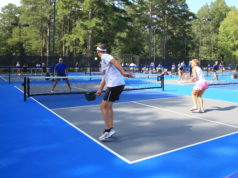By Ketan Patel, DPM, FACFAS
One of the most common foot aliments is heel pain, and the diagnosis of the cause of heel pain can be difficult due to an array of entities that could be the reason for this rather annoying problem. Coincidentally, though, the symptoms of heel pain can be just as complex and variable.
Patients complain of a variety of symptoms ranging from sharp pain, “stone bruising,” tenderness, soreness, burning, aching and stiffness in the heel. Many times these symptoms are especially exhibited when an individual bears weight after a period of rest, such as in the morning when getting out of bed or after sitting for a period of time and then suddenly resuming activity.
The No. 1 reason behind heel pain is plantar fasciitis, which is the inflammation of a tight band of tissue on the bottom of the foot that supports the arch of the foot. Other reasons may include Achilles tendon conditions and injuries, gout, arthritis, nerve injuries, heel spur, tumors of the heel bone and collagen disorders.
Treatment: Conservative and Conventional Surgical Options
Treatment of heel pain can be as variable and complex as the causes can be. At-home remedies include over-the-counter anti-inflammatories, icing, supportive shoe gear, gentle stretching of the calf muscles and rest. Patients with poor circulation, diabetes, chronic illness or any additional questions regarding the pain should consult a physician prior to trying an at-home treatment.
If these remedies are found to be ineffective, a podiatrist can aid in the resolution of these aliments. Some conventional professional treatments include the use of prescription anti-inflammatories, physical therapy, specialized taping and padding of the foot, inserts for the shoe, cortisone treatments, laser treatments, surgical fascial release and state-of-the-art endoscopic procedures.
New Age Alternatives
Previously, thousands of people who suffered from plantar fasciitis and Achilles tendonitis were frustrated with ineffective over-the-counter treatment or conservative professional care, but opted not to go under the knife for surgery that would involve pain, bleeding, general anesthesia and a lengthy recovery.
Now, platelet enriched plasma, amniotic graft tissue injections (a type of stem cell treatment), radiofrequency wave microdebridement or cobablation, and extra corporeal wave therapy are new-age cutting-edge options that patients should consider when weighing conventional means of treatment.
Extracorporeal shock wave therapy (ESWT) is used as a pain reliever and has more than a 90 percent success rate in symptom reduction. This form of therapy works by targeting concussion sound waves directly to the area that is experiencing pain and typically lasts less than 30 minutes. These sound waves help rebuild damaged cells, creating a faster recovery time with minimal side effects. The best benefit about the procedure is that is is performed without an incision. Radiofrequency wave microdebridement, which is provided in an injection style, has also been shown to achieve the same results as ESWT; however, ESWT is achieved utilizing a different type of sound waves and in some studies has shown a higher success rate.
Another soundwave treatment that has been helpful is radiofrequency wave coblation of the Baxter’s nerve. It addresses irritation of the nerve that is believed to be the main pain source of heel conditions. This treatment stuns the nerves and results in a temporary block of the nerve, which results in improvement of gait, resulting in lessening of chronic strain of the plantar fascia and allows for healing of the damaged structure.
If waves aren’t your thing, platelet rich plasma (PRP) injection therapy stimulates the inflammatory response and jumpstarts the healing process. Platelets are used because they contain bioactive proteins and growth factors that are important for tissue repair and healing.
Amniotic graft tissue injections, a type of stem cell therapy, are also now being utilized in the same fashion as PRP. It stimulates the body’s innate dormant ability to regenerate diseased tissue to its normal state, but these grafts are shown to have a distinct advantage and improved success rate over PRP or normal body healing mechanisms because it allows for faster recovery, is anti-inflammatory, leaves no scarring and has antimicrobial characteristics.
_______
Dr. Ketan Patel, who practices with Ankle & Foot Centers of Georgia, is respected in all phases of surgical and medical management of conditions in the lower extremity. He is a lecturer and educator who has been appointed to numerous leadership positions within the medical community and has been recognized and awarded for his expertise.




